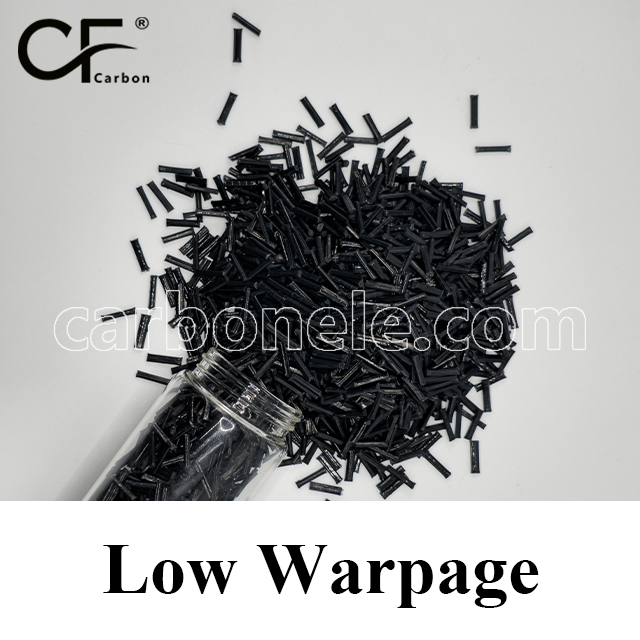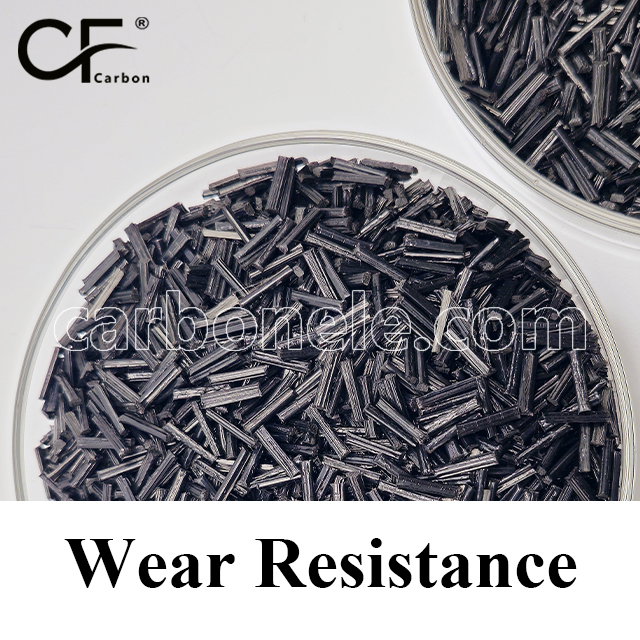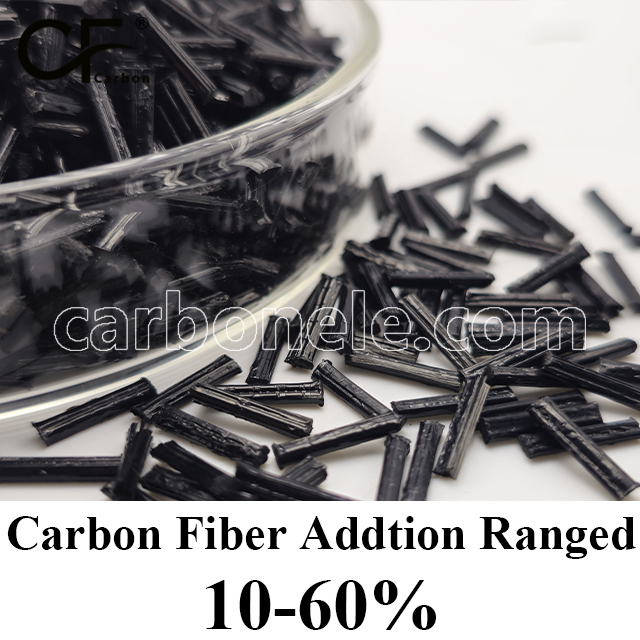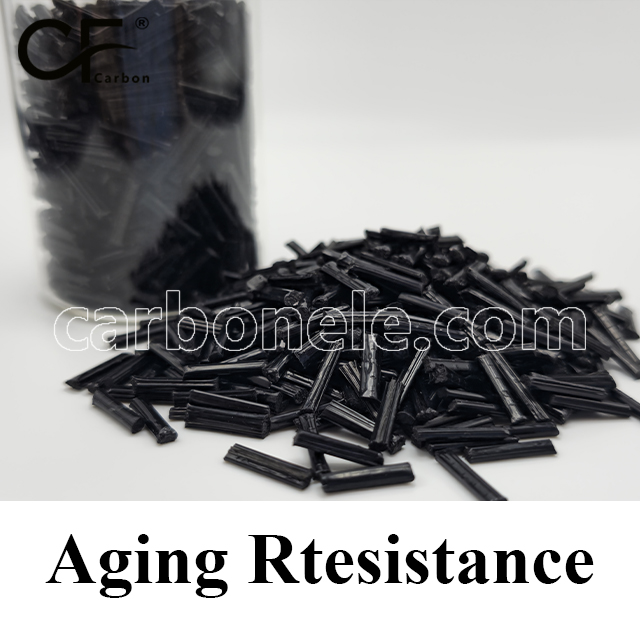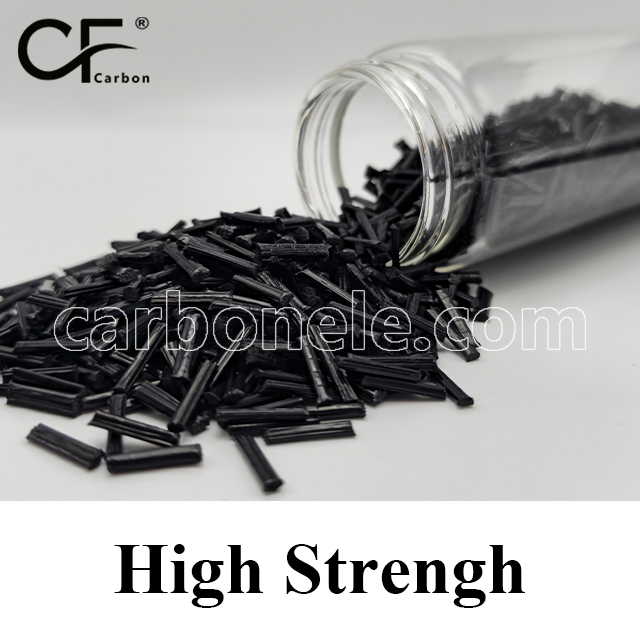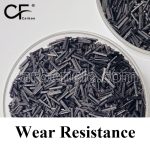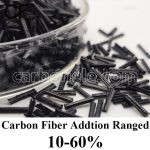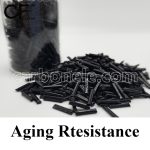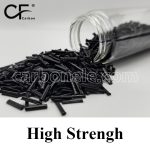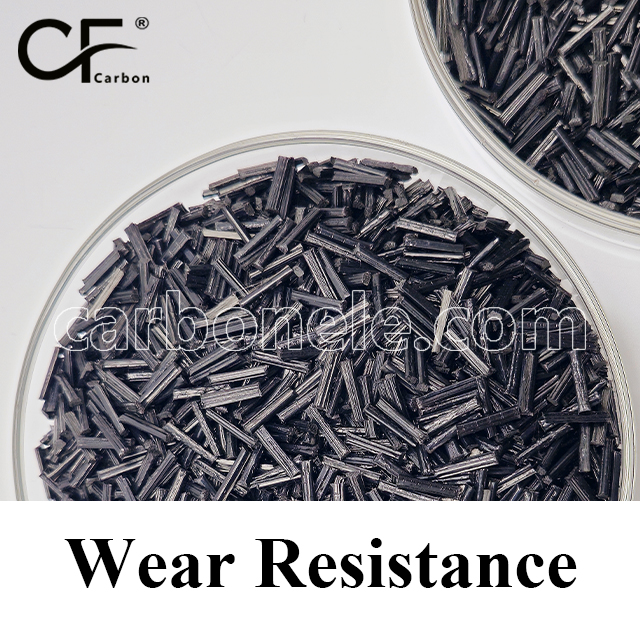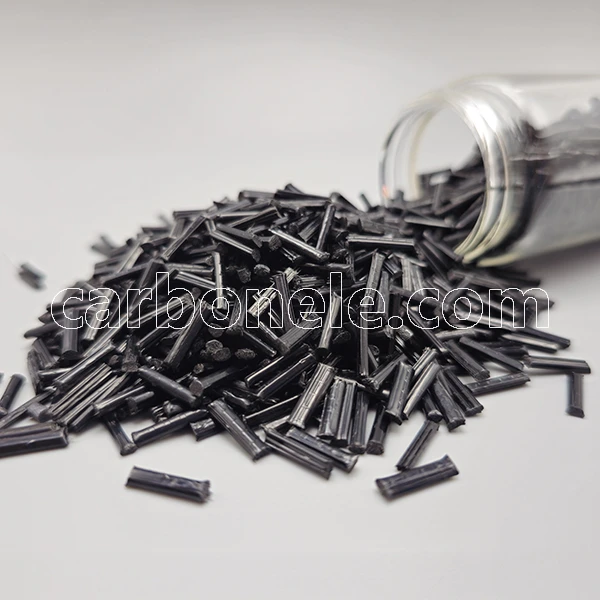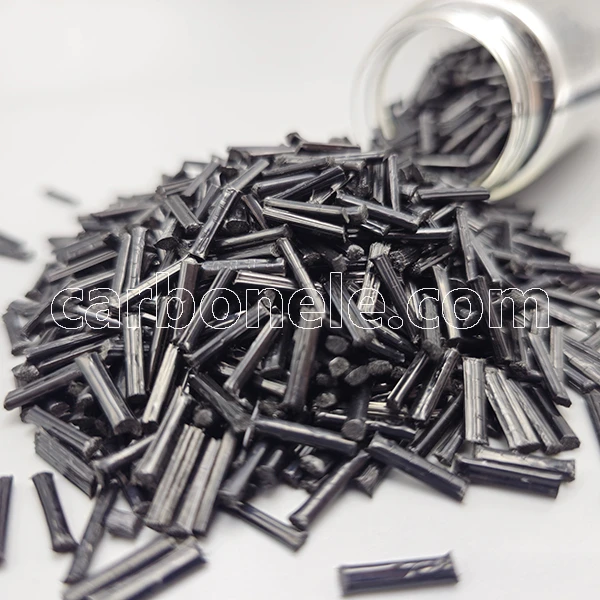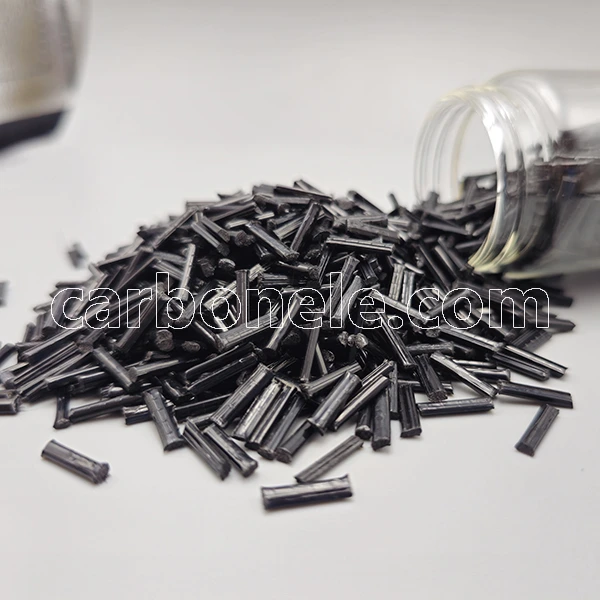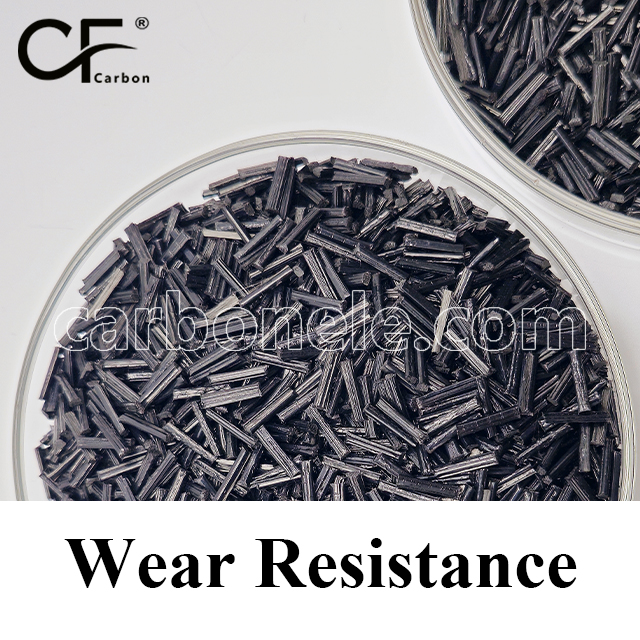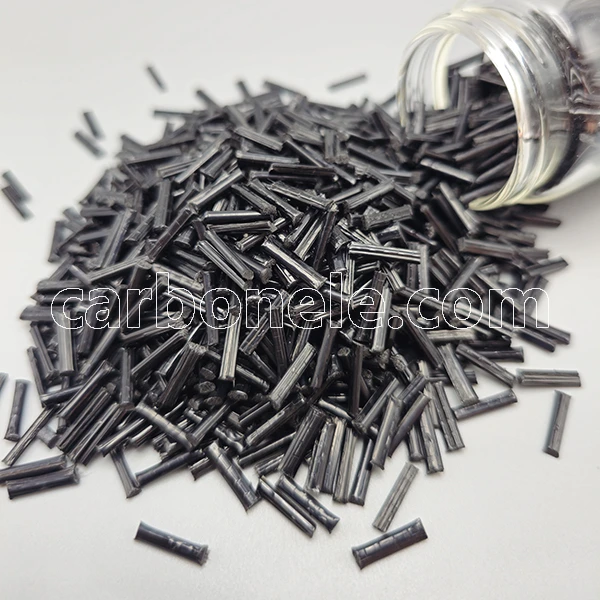The friction coefficient of PPA-CF is typically lower than that of standard PPA, as its carbon fiber reinforcement provides better lubrication, reducing friction and wear, and enhancing performance under high friction conditions.

High Temperature Environments PPA-LCF50
PPA-LCF50 is an ultra high-performance polyphthalamide reinforced with 50% long carbon fibers, offering exceptional tensile strength (~200–215 MPa), extreme stiffness (~18–20 GPa), and excellent thermal resistance (HDT ~300 °C). Ideal for replacing metal in structural parts exposed to high loads, heat, and chemicals.
- Model number: PPA-LCF-BCA4
- Matrix Resin: Personal Package Archive (PPA)
- Reinforcing Filler: Carbon fiber
- Appearance: Granules
- Grade: Injection/extrusion grade
- Packaging: 25kgs/bag
PPA-LCF50 | 50% Long Carbon Fiber Reinforced Polyphthalamide
PPA-LCF50 is an ultra high-performance, semi crystalline engineering thermoplastic reinforced with 50% long carbon fibers, engineered to deliver maximum mechanical strength, extreme stiffness, and exceptional dimensional stability under prolonged mechanical, thermal, and chemical stress. With one of the highest long carbon fiber loadings among thermoplastics, PPA-LCF50 approaches the performance of light metals while maintaining the superior chemical and thermal resistance of polyphthalamide (PPA).
Compared to PPA-LCF40 or short fiber alternatives like PPA-CF50, this grade offers substantially improved stiffness, strength retention under load, and creep resistance — ideal for structural components operating in harsh environments requiring long service life and zero tolerance for dimensional drift.
Core Performance Highlights
Mechanical Properties
Carbon Fiber Content: 50% (high density long carbon fibers for maximum reinforcement)
Tensile Strength: ~200–215 MPa — extremely high load bearing capability
Flexural Modulus: ~18–20 GPa — ultra stiff, metal like behavior under stress
Elongation at Break: ~0.5–0.8% — maintains limited ductility despite extreme stiffness
Notched Izod Impact: ~50–65 J/m — reliable impact strength for structural reliability
PPA-LCF50 enables top tier structural performance for demanding, fatigue prone, and high load applications.
Thermal Resistance
Heat Deflection Temperature (HDT): ~290–300 °C
Continuous Use Temperature: Up to 260 °C
Outstanding thermal endurance suitable for high temperature automotive and industrial systems such as engine compartments, electric drive modules, and high power electronic enclosures.
Environmental & Chemical Durability
Moisture Absorption: ~0.03–0.06% — ultra low, ensures dimensional accuracy over time
Chemical Resistance: Excellent — resists fuels, oils, coolants, acids, bases, and industrial solvents
Operates effectively in corrosive, humid, and chemically active environments without mechanical degradation or warping.
Processing & Manufacturing
Molding Method: Injection molding (optimized for long fiber feedstock or direct long fiber thermoplastic processing)
Surface Finish: Matte to rough, visible fiber pattern common due to high loading
Tooling Requirements: Requires hardened, abrasion resistant steel molds due to extreme fiber wear potential
Processing Notes: Flowability is significantly reduced at 50% fiber content — mold and gate design must be carefully engineered for successful part formation and full fiber alignment.
Though processing becomes more challenging, the result is a part with exceptional performance and lifespan.
Target Applications
Automotive & Mobility
Applications: Battery enclosures, high load mounting brackets, crossbeams, EV structural housings
PPA-LCF50 replaces aluminum or magnesium alloys in structural parts that must endure heat, vibration, and mechanical shock.
Electronics & Electrical
Applications: Power electronics frames, motor housings, EMI shielding covers
High thermal resistance and dimensional stability under continuous load make it suitable for dense and high power designs.
Industrial Equipment
Applications: Precision load bearing housings, robotic actuator arms, pump frames
Offers high strength, chemical resistance, and low creep in chemically aggressive and mechanically demanding environments.
Performance Summary Table
| Property | Value / Description |
|---|---|
| Carbon Fiber Content | 50% (Long Carbon Fiber Reinforced) |
| Tensile Strength | ~200–215 MPa |
| Flexural Modulus | ~18–20 GPa |
| Elongation at Break | ~0.5–0.8% |
| Notched Izod Impact | ~50–65 J/m |
| Heat Deflection Temp. | ~290–300 °C |
| Continuous Use Temp. | Up to 260 °C |
| Moisture Absorption | ~0.03–0.06% — extremely low, tight dimensional control |
| Chemical Resistance | Excellent — fuels, oils, acids, bases, solvents |
| Wear Resistance | Extremely high — suited for high load and friction zones |
| Processing Method | Injection molding — long fiber compatible |
| Surface Finish | Matte/rough — visible fiber texture typical |
| Dimensional Stability | Outstanding — ultra-low creep, high stiffness retention |
If you want to get more information about PPA-LCF50, you can visit our Youtube.
Strength between PPA and PPA-CF
PPA-CF (carbon fiber reinforced) offers significantly higher mechanical strength and rigidity compared to standard PPA. The addition of carbon fiber enhances tensile strength, flexural strength, and wear resistance, making PPA-CF more suitable for heavy loads and extreme environments. While standard PPA is suitable for medium-load and conventional applications, PPA-CF provides superior performance for more demanding industrial conditions.
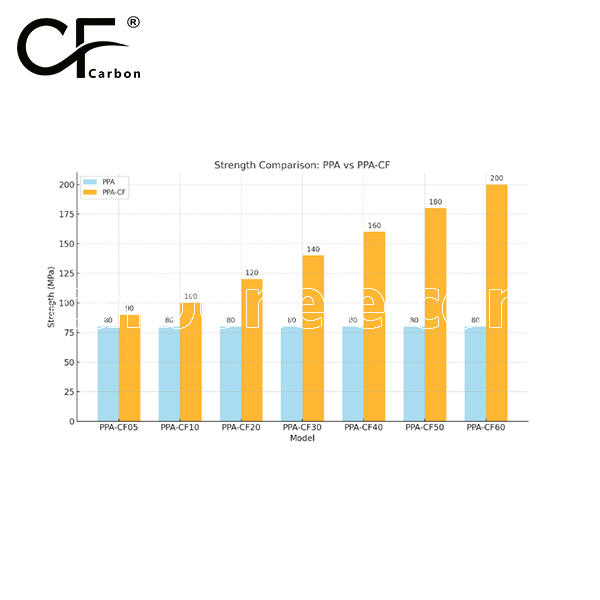
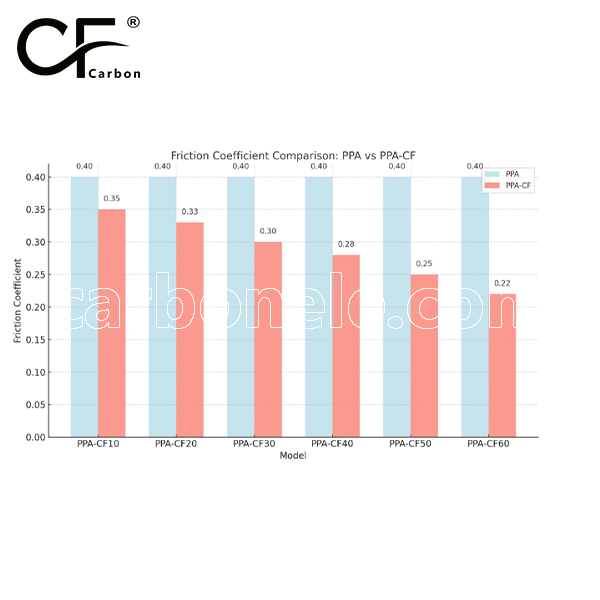

Frequently Asked Questions
Carbon (Xiamen) New Material Co., Ltd. aims to provide buyers with "one-stop" worry-free high-quality services. Here you can find all information about carbon fiber engineering plastics. If you still have questions, please send us an email for consultation!
-
How can I contact the manufacturer of a product that interests me?
When you find a product you are interested in, you can contact the manufacturer directly by sending an email and we will get back to you as soon as possible.
-
How do I find the products that interest me?
All you need to do is enter the keyword, product name in the search window and press the Enter key on your keyboard. Your search results page will then be displayed. You can also search within the product category pages on the home page. Each category is divided into subcategories, allowing you to refine your search and find products that interest you.
-
Where will I find a buying guide?
Please contact our after-sales service directly and we will provide you with a comprehensive operating guide.
-
What are CF Reinforced Thermoplastic Composites?
CF Reinforced Thermoplastic Composites are materials where carbon fibers are incorporated into a thermoplastic matrix. They combine the strength and stiffness of carbon fibers with the processability and recyclability of thermoplastics. For instance, they are used in automotive parts like bumper beams.
-
What are the benefits of CF Reinforced Thermoplastic Composites over traditional composites?
The key benefits include faster production cycles, easier recyclability, and better impact resistance. They also offer design flexibility. An example is in the manufacturing of consumer electronics casings where complex shapes can be achieved more easily.
-
How are CF Reinforced Thermoplastic Composites processed?
Common processing methods include injection molding, extrusion, and compression molding. Injection molding is widely used for mass production. For example, in the production of small components for the medical industry.
-
What industries use CF Reinforced Thermoplastic Composites?
They are utilized in aerospace, automotive, medical, and sports equipment industries. In aerospace, they can be found in interior components. In the medical field, they might be used in prosthetics.
-
How does the carbon fiber content affect the properties of the composites?
Higher carbon fiber content generally leads to increased strength and stiffness but may reduce ductility. A moderate content is often balanced for specific applications. For example, a higher content might be preferred in structural parts of a race car.
-
What are the challenges in using CF Reinforced Thermoplastic Composites?
Challenges include higher material costs, complex processing equipment requirements, and ensuring uniform fiber dispersion. Issues with adhesion between the fibers and the matrix can also arise. An example is in achieving consistent quality in large-scale production.







